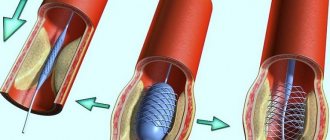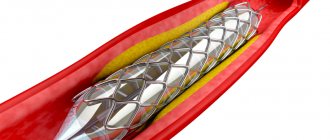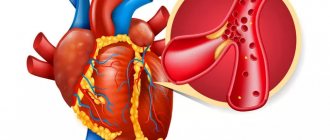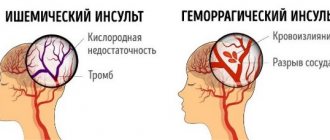Author Andrey Belyakov
03/12/2008 10:36 (Updated: 08/20/2021 12:19)
Health » Health and prevention
The vast majority of heart attack survivors can safely return to driving. In some cases, having your own car turns out to be not only not harmful, but also extremely useful. Agree, it’s one thing to get to work on foot or jostled in public transport, and quite another thing to drive calmly in your own car. But just really calm.
What post-infarction indicators affect the ability to drive?
The brain processes information slowly at first. A person’s speed of perception and reaction decreases, which prevents him from reacting to a traffic situation in a timely manner. An extensive infarction leads to the formation of multiple scars that impair the contractile function of the muscle. This often provokes loss of consciousness or repeated attacks.
List of evaluation criteria that do not allow you to drive independently:
- unstable psycho-emotional state;
- physical weakness and slow recovery rate;
- the myocardium was severely damaged as a result of circulatory disorders;
- there is arrhythmia or tachycardia.
The presence of one of these indicators (and they appear in absolutely everyone at first) prevents a person from driving in person. Until his condition stabilizes, he is advised to move around in another way for his own safety. If the evaluation criteria meet the restoration standards, the motorist can obtain permission to drive land vehicles.
When the heart and nervous system are so strong that a person feels comfortable behind the wheel, doctors allow him to drive a car. This is included in the recovery plan, since when moving by transport, the cardio system is not loaded as much as when walking.
But is it possible to work as a driver after a heart attack? There are laws in the Russian Federation that prohibit engaging in this type of activity. The director, based on the conclusion of the VTEK and the person’s application, provides him with a position not related to driving.
Doctors' opinion
When you can drive after a myocardial infarction and stenting depends on the speed of recovery. General treatment predictions are that this occurs no sooner than 60 days after the attack. If a person does not have finger trembling and his psycho-emotional state has stabilized, then he is allowed to drive a car. In the presence of irritability, anxiety, tremor and other residual effects of a heart attack, driving is temporarily contraindicated.
According to doctors, moving independently by car eliminates physical and psycho-emotional stress compared to traveling by public transport or walking long distances. Therefore, in the late rehabilitation post-infarction period, you can drive a car in compliance with medical recommendations and driving principles.
Driving rules after a heart attack
You need to constantly monitor your well-being and health in general. Immediately before operating the machine, you need to measure your heart rate, pulse, blood pressure, and make sure that there are no failures in coordination of movements, dizziness, or blurred vision.
If your health worsens:
- before the trip - they refuse to drive;
- while driving, stop the car and press the emergency signal button.
In both cases, you need to take the medicine immediately. Nitroglycerin and other prescribed medications must be carried with you, regardless of the method or distance of movement.
Medical requirements for driving after myocardial infarction:
- Immediately after admission, it is prohibited to drive a vehicle alone. For the first 1.5-2 months, they take a passenger in case of a sudden deterioration in health.
- It is forbidden to travel far. Initially, you are allowed to drive on an uncongested road for 5-10 minutes. The duration is increased gradually, but you cannot move long distances. This will prevent overwork and reduce the risk of another attack.
- To exclude a relapse due to worries about being late for work, you can switch to a variable schedule by presenting the director with a certificate from the VKK.
- It is not recommended for drivers to travel during rush hour. Driving on a busy road increases nervous tension, which increases the risk of relapse.
Mandatory requirement for driving after a heart attack: always carry Nitroglycerin with you. If you feel worse, you need to turn on the alarm, stop and take medicine. Then call an ambulance.
conclusions
The adequacy of physical activity and restrictions in rest is determined and assessed by the doctor in the process of dispensary observation of the patient. In any case, returning to a normal lifestyle will take at least a year after a heart attack.
When expanding activity, a comprehensive examination of the patient is carried out to determine coronary reserve and exercise tolerance. Speed running, weightlifting and lifting weights are contraindicated for life. But you can drive a car after a heart attack.
Risks
At first, it is difficult for a person after a heart attack to simultaneously focus on following traffic rules and listen to his own well-being. And the status of domestic roads and the behavior of some ill-mannered drivers or pedestrians adversely affect his psycho-emotional state. Therefore, during each trip, a relapse of the disease may occur.
Repeated heart attack or loss of consciousness while driving can cause an accident. As a result of an accident, both the driver himself, the drivers of the affected cars, or bystanders can die or become disabled. Therefore, driving in the post-infarction period is always dangerous.
Is it possible to drive a car after a heart attack? VKEC specialists decide. Loss of control over the car ends in an accident and poses a threat to the lives of all road users. A person with arrhythmia and the presence of a syndrome accompanied by frequent loss of consciousness should not drive. Such people will not be able to renew their driving record during the next medical examination or, if necessary, to restore their license.
I have only myself to blame
According to Judge Oleg Zatelepin of the Supreme Court of the Russian Federation, the need to develop this document is caused by the age of the previous similar act, issued 27 years ago. The new resolution will summarize judicial practice in criminal cases regarding violations of labor protection requirements and safety rules during construction and other work or industrial safety requirements of hazardous industries.
According to the data presented at the meeting, more than 1.7 thousand people died in the workplace last year. However, 24 percent of deaths were recorded in the construction industry. People also often die in manufacturing, agriculture, hunting and fishing. Mining industry comes in last place with 8 percent of accidents.
The judges also explained the need to develop a new resolution by the recent entry into force of amendments to the Criminal Code of the Russian Federation, which tighten liability for incidents at hazardous production facilities. According to changes to the Code, those found guilty of causing grievous harm to human health or major damage face a fine of up to 400 thousand rubles or imprisonment of up to 3 years.
As noted in the draft resolution of the plenum of the Supreme Court, when considering each case under Article 143 of the Criminal Code of the Russian Federation “Violation of labor protection requirements”, Article 216 “Violation of safety rules during construction or other work” or Article 217 “Violation of industrial safety requirements of hazardous production facilities” not only the fact of violation of special rules, but also the presence or absence of a causal relationship between these violations and the resulting consequences must be established and proven.
“If an industrial accident occurred only as a result of the negligent behavior of the victim himself, the court must, if there are grounds for this, decide on the issue of an acquittal,” the draft resolution notes.
And a very important amendment - victims in criminal cases can be not only employees with whom employment contracts were concluded in the prescribed manner, but also persons with whom the contract was not concluded or was not properly executed, but the employee began work with the knowledge or on behalf of employer.
If the incident occurred solely due to the negligent behavior of the employee, the court must take this into account and acquit the employer
The document establishes that liability under Article 143 lies with the employees of the company in which the accident occurred, as well as employees of the labor protection service. Managers of an organization can also be prosecuted under this article, but only if they did not take measures to eliminate violations of labor safety requirements known to them or gave instructions that contradict such requirements. Article 143 of the Criminal Code of the Russian Federation provides for punishment in the form of imprisonment for up to 5 years.
Following the discussion, the Chairman of the Supreme Court, Vyacheslav Lebedev, sent the draft resolution for revision.
“This project preserves the most important and still relevant provisions that were in the previous resolution, and also systematizes and adapts the existing practice over all this time,” notes lawyer Ruslan Mannapov. — It is especially worth noting that the document contains provisions on the possibility of reference in a court decision not only to the violated rule of law, but also to local regulations in force at the employer. He also mentions industrial accidents when performing work under a civil contract.
“The problems that exist in this area of law are more serious and broader; the number of accidents is much higher than the officially announced statistics,” notes lawyer Irina Fast. — The main problem is the resolution of criminal cases in relation to accidents involving workers who were not employed or were registered through civil legal relations with third parties.
Investigation of such cases is not carried out by the labor inspectorate due to the lack of labor relations. And this is a serious problem at all construction sites in the country. “Each time, in order to obtain a result, the victim is forced to first establish through the court the fact of the existence of an employment relationship with a particular company, and only then seek any responsibility for what happened for the guilty persons from among the employers,” notes Irina Fast.
What does the law say?
Can a person drive a car after a myocardial infarction? It is prohibited to do this professionally, which was approved by Order No. 302N dated April 12, 2011. The car may become uncontrollable and an accident may occur with possible death of participants in the traffic accident or third parties.
In the post-infarction period, the driver is assigned disability group III. He is assigned a state benefit and given light physical work. But he can drive his own transport, since motorists are allowed to drive in the absence of complications of the disease.
How to speed up rehabilitation?
To prevent relapse and facilitate recovery, doctors may suggest coronary stenting. The minimally invasive operation is performed under local anesthesia. The surgeon inserts a stent into the femoral artery through a catheter. Then, along its channel, the device is brought to the place of narrowing. After installing the tube, the vessel wall expands along the perimeter of the lumen, which ensures normal blood circulation.
| Actions of the patient after a heart attack and/or stenting during the rehabilitation period | |
| What speeds up recovery | What must be done |
| Unquestioning adherence to all medical recommendations. | Gradually increase physical activity. |
| Rest in a sanatorium that specializes in cardiovascular diseases. | Do not lift loads exceeding 3 kg. |
| Transfer to a position with favorable working conditions. | They walk for 5-60 minutes every day, accompanied by a relative. |
| Hobby: listening to your favorite music. | Follow diet No. 10 according to Pevzner. |
| Psychologist consultations. | Avoid overwork and nervous tension. |
| Normalization of weight and cholesterol levels | They continue to take medications. |
| Quitting smoking and other bad habits. | See a cardiologist. |
A man or woman should “weed out” intimidating information about the way of life after a heart attack. At what stage of rehabilitation you can start working, driving a car, having sex and other information should only be obtained from the attending physician, who knows all the individual indicators and dynamics of rehabilitation.
Restrictions on holidays
All habits and traditions change after illness, including those related to recreation. Many patients wonder whether it is possible to go to the sea after a heart attack. In the early outpatient period, this is strictly prohibited; at the stage of sanatorium-resort treatment, it is also better to relax in your own climatic zone, without subjecting the body to the test of heat and a long road.
According to doctors' recommendations, swimming in open water is only possible 7-8 months after a heart attack. By this time, the sutures on the sternum have healed, reducing the risk of an angina attack and changes in heart rate. It is forbidden to organize swims, it is forbidden to dive or engage in diving.
At the same time, moderate swimming in the pool provides a beneficial exercise for the heart.
Stages of the therapeutic swimming cycle:
- Preparatory: breathing exercises and procedures (rubbing, dousing, foot baths).
- Basic: at a water temperature of +26°C and air temperature of +24°C, you can swim in an open pond or pool for 15-20 minutes.
- Final: carried out in water with a gradual decrease in load.
Another important issue is related to possible flights to a vacation spot. Flying on an airplane is not advisable after a heart attack and stenting, but it is not prohibited.
A number of restrictions apply here:
- do not fly earlier than six months after a severe heart attack and two weeks after an uncomplicated one;
- obtain a consultation from the attending physician and a statement about the treatment of the heart attack and the condition after it;
- before takeoff, place a Validol tablet under your tongue;
- if you feel anxious or nervous, take a sedative;
- during a long flight, periodically get up from your seat and walk around the cabin for normal hemodynamics.
It is strictly prohibited to use aviation services in case of heart failure not corrected by medications, severe arrhythmia, persistent arterial hypertension, or unstable angina.










